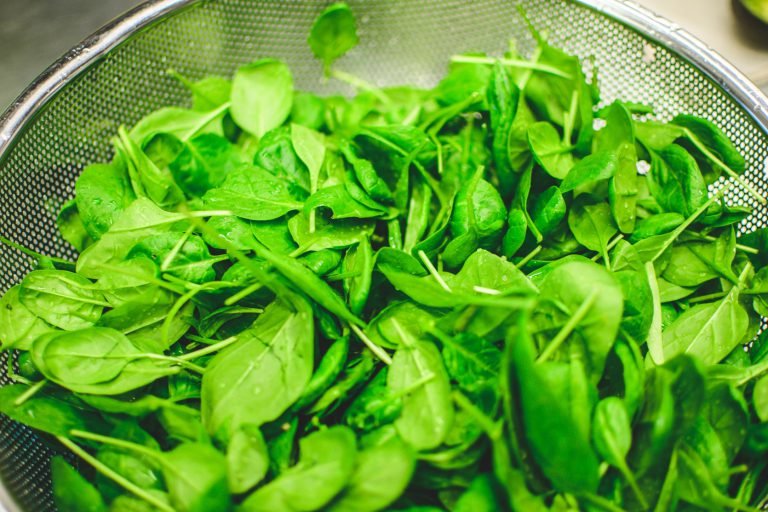Why You did not Try Swiss Chard Yet? Our Super Food of the month

It is a leafy green plant. Swiss chard origin is not Switzerland, it was named by a Swiss botanist. Stem chard, leaf beet, Silverbeet, and seakale beet are some other names of chard plants.
Swiss chard leaves taste like spinach and stems which are colorful and crunchy, taste like celery. People might think that they are waste but they are good in taste.
There are different varieties of swiss chard plants because of their color and taste. It includes yellow, green, and red chard (Rainbow chard is a mix chard). The famous varieties of Swiss chard are Swiss chard Bright Lights, Lucullus, Rhubarb, Bright Yellow, and Fordhook Giant.
It has been used in different recipes for centuries. It is a very beneficial and tasty leafy vegetable. You can make soups, salads, and sautéed chards which will add delicious flavor to your recipe.
This article will provide you some benefits, side effects, uses, recipes of swiss chard.
Swiss chard Benefits
It is a very healthy leafy green vegetable. It is full of nutrition(1).
- Rich source of Vitamin K
- It is very good to lower blood pressure as it contains all minerals, calcium, and magnesium to control blood pressure.
- It is also very helpful in preventing heart disease.
- It also helps to control the cholesterol level.
- It contains alpha-lipoic acid which helps to lower the blood glucose level. It is also very supportive in preventing oxidative stress-induced changes and increasing insulin sensitivity in diabetes patients.
- Rich sources of vitamin K help to improve bone health and prevent osteoporosis.
- Some studies support, Swiss chard is good to decrease the risk of obesity and support weight loss due to its fewer calories.
- It is a good pack of antioxidants that support the immune system and help to fight disease.
- It may prevent lung cancer.
Risk Factors
- As it is a rich source of vitamin K, people taking blood thinner medicine should not suddenly change Vitamin K amount in their diet. This plays an important role in clotting blood and could interfere with Warfarin or any other blood-thinning medicine.
- Avoid in case of kidney stones as swiss chard contains oxalates. Oxalate (1) decreases calcium absorption which can cause kidney stones. 1/2 cup of steamed white-stalked swiss chard has about 500 mg of oxalate and one-half cup of steamed red swiss chard has more than 900 mg of oxalate so a high amount of Oxalate can also cause Pain or Poor sleep.
- Doctors and Health Experts only recommend approx 120 mg of oxalate per day
- It contains a high amount of sodium.
Cooking Swiss chard
There are varieties of chard recipes. You can make swiss chard salad and soup. It can be cooked like spinach. You can roast, stir fry, and sautéed Swiss chard. You can use large leaves as wraps and wilt them into sauces and stews. Its leaves, as well as stems, both are delicious and useful in different chard recipes.
You can add swiss chard to your meal in some of the following ways.
- Add in your smoothie
- Make chips by baking leaves after rubbing some olive oil.
- Add in your favorite pasta.
- Pickle its stems
- Top your pizza.
- Stuff chicken breast with chard and cheese.
Swiss Chard Recipes
Red Chard Salad Recipe
Ingredients
Swiss chard 1 bunch
Olive oil ½ cup extra virgin
Bread crumbs 1 ½ cup (fresh)
Red pepper flakes (optional) as per taste (crushed)
Garlic 1 clove minced
Sea salt as per taste
Lemon 1
Parmesan cheese ¾ cup (grated)
Method
- Take a bunch of Swiss chard and wash it properly.
- Remove the stalk. (you can use it later in other dishes)
- Dry the leaves and layer the leaves on top of each other and make a roll like a cigar.
- Cut the leaves into very thin slices.
- Take a large bowl and put all the cut leaves in the bowl.
- Take a small skillet and add ¼ cup oil to it and put it on flame.
- Add bread crumbs into it and stir fry until golden brown on medium heat.
- Add salt as per your taste, chili flakes, and garlic, and toast them for 1 more minute. Put the flame off.
- Zest the lemon
- Put the lemon juice in a small bowl. Whisk it with ¼ cup olive oil and salt.
- Now add lemon zest, parmesan cheese, bread crumbs, and dressing over swiss chard and toast it properly.
- Serve it immediately.
Swiss Chard Soup with Chickpeas
Ingredients
Swiss Chard ½ pound (only leaves, chopped)
Chickpeas 6 cups (almost 3 cans of 19-ounce)
Garlic 4 minced cloves
Chicken Stock 3 cups (you can use low sodium chicken canned broth)
Onion 1 chopped
Olive oil 3 tablespoon
Carrot 1 chopped
Black pepper ¼ teaspoon (freshly ground)
Macaroni ½ cup
Dried Rosemary 1 teaspoon
Bay leaf 1
Celery 1 chopped
Red chili flakes as per taste or a pinch
Canned Tomato 1 cup in thick puree, chopped
Salt as per taste
Method
- Take a blender and make a puree of ½ of the chickpeas with 1 ½ cup of broth.
- Take a large pot and add oil to it and put on medium-low flame.
- Add celery, carrot, rosemary, onion, and garlic all together in the pot and fry them for 5 minutes or until all the veggies are soft.
- Now add the remaining broth and puree of chickpeas in the veggies and stir it well.
- Add bay leaf, chickpeas, red pepper flakes, tomato, macaroni, and salt.
- Bring it to a boil. Now let it simmer on low flame for 10 minutes. (cover it partially)
- Add swiss chard to the soup and let it cook for the next 5-10 minutes.
- When the pasta is done and the Swiss chard is tender now you can add black pepper and remove the bay leaf.
- Soup is ready. If you feel it thick then add some water or chicken broth.
Lemon-Garlic Rainbow Chard Recipe
Ingredients
Rainbow Swiss chard 3 bunches, trimmed and rinsed
Olive oil 6 tablespoon
Lemon juice 1 tablespoon
Garlic cloves 6 sliced
Red pepper flakes a pinch
Method
- Take chard and separate the stems from leaves to cut them into thin slices. Also, cut the leaves into thin strips.
- Take a large skillet and add oil to it. Heat the oil over medium flame and add garlic, chard stems, and red pepper flakes until stems become soft or for the next three minutes.
- Now add chard leaves and cook for another 5 minutes over low medium flame or until the chard is tender.
- Shift it into a bowl and toss lemon juice.
Swiss chard Recipes Jamie Oliver
Chickpea Chard Pork(1)
Ingredients
Pork fillet piece 400g (higher welfare)
Roasted peeled peppers in brine a jar of 480g (dice it in 1 cm chunks)
Rainbow chard 300 g (trimmed and sliced)
Fennel seeds 1 teaspoon (heaped)
Chickpeas 660 g jar
Sea salt as per taste
Black pepper as per taste
Olive oil 1 tablespoon
Fennel seed 1 teaspoon
Method
- Put a pan (a large shallow pan) on high heat and add olive oil. Add pork fillet, season it with pepper and salt.
- Cook for five minutes then shift the fillet into a plate, keep the pork fat left behind in the pan.
- Now add pepper, fennel seed, and chard into a pan and stir fry them for 2 minutes.
- Pour chickpeas with juice and stir well and bring it to boil.
- Now put the pork fillet in the pan and cover it with the juice in the pan.
- Put the flame on medium heat and cover the pan.
- Let it simmer for 12 minutes or until the pork cooks completely. (turn the pork fillet occasionally).
- Ready to serve.
Swiss chard substitute
Some of the vegetables can be a good substitute for Swiss chard.
Beet Green: It is a substitute for chard. It tastes like both beets and kale.
Dark Leafy Greens: It has crispy leaves which taste like swiss chard after cooking. It is also a very good and rich source of vitamins and minerals.
Mature Spinach and Regular Spinach: Mature spinach has bigger leaves than regular spinach. Both Swiss chard and they have some kind of taste that’s why it is a good substitute.
Some other Substitutes: Some of the other vegetables can also replace the swiss chard in the dish because of their taste and color. It includes Collard greens, Mustard Greens, Bok choy, and Cavolo Nero.
Swiss chard FAQs
- How to grow Swiss Chard at home?
Growing Swiss chard is very easy. You can grow swiss chard in your garden in an open and sunny place. You need fertile and moist soil. First prepare the soil, after a week sows the seed at 1 inch apart.
The perfect season to grow swiss chard is between spring and late summer. Water them frequently. You can harvest them when their leaf size is usable. Never cut the whole leaf, pick only half the leaves and the rest will help to grow leaves again and again.
- Why do we need to substitute Swiss Chard?
If swiss chard is not easily available in the market or you are short of it. You can add any of the chard substitutes to make a delicious dish. In some of the countries, you may not be able to find Swiss chard, so you can substitute it with spinach.
- Swiss Chard nutrition cooked – 1 Cup 175 g
Swiss chard is full of minerals and vitamins. It is a rich source of Dietary fiber, Folate, Zinc, and Thiamin. It contains very less amount of cholesterol and saturated fats.
Swiss chard Nutrition data (1,2)
It is a good source of vitamin K, vitamin E, vitamin C, Vitamin A, vitamin B6, Calcium, magnesium, potassium, copper, iron, and phosphorus.
Swiss chard is a leafy green vegetable that is rich in vitamins and minerals. A 1-cup serving (36 grams) of cooked Swiss chard contains:
- Calories: 7
- Protein: 0.7 grams
- Fat: 0.1 grams
- Carbohydrates: 1.4 grams
- Fiber: 0.6 grams
- Vitamin A: 44% of the Daily Value (DV)
- Vitamin C: 18% of the DV
- Vitamin K: 374% of the DV
- Calcium: 4% of the DV
- Iron: 4% of the DV
- Magnesium: 3% of the DV
- Potassium: 4% of the DV
Swiss chard is also a good source of antioxidants, such as beta-carotene and lutein, which can help protect your cells from damage caused by free radicals. It is a low-calorie and low-carbohydrate food, making it a great option for those watching their calorie or carb intake.
Overall, Swiss chard is a nutritious and flavorful vegetable that can be enjoyed in a variety of ways, from sautéing and steaming to using it as a salad base.
- Swiss chard extract
Swiss chard extract has shown some good effects to control certain issues. Some animal studies support that swiss chard extract helps to improve insulin discharge. It also works to regulate blood pressure and stabilize the level of LDL and total cholesterol. But large-scale studies require finding the effects of Swiss chard in your regular meal.
- Are Swiss chard stems poisonous?
Swiss chard stems are not poisonous but people sensitive to oxalic acid should avoid it. As all parts of chard contain oxalic acid and make oxalate urinary tract stones. Rhubarb (a variety of Swiss chard) leaves contain a high amount of oxalic acid which can be poisonous.
- Swiss Chard Powder
Swiss chard powder can be easily made from dried leaves. It is easily available in the market. It has very little taste and can be used in place of dried parsley or add in any puree or sauce without changing the taste.
- Swiss chard superfood
Swiss chard is rich in minerals and vitamins. It is a nutrient-dense superfood with lots of benefits. It also helps to control certain diseases like cancer, diabetes, and high blood pressure.
Conclusion
Swiss chard is a tasty and healthy leafy green vegetable. It is a superfood pack with multiple nutrients. It also helps to control certain diseases if taken in a reasonable amount but keep in mind Moderation is key, Eating too much can cause toxic side effects. It is better to take advice from your health advisor if you notice any sudden change or health issues after having it in your meal. It is not advisable to take in large amounts as taking in daily meals is still not verified by any research or studies.
We will love to know your experience, how you find its recipes, and do you like its taste. Please let us know your feedback and tell us your reviews about Swiss chard.







